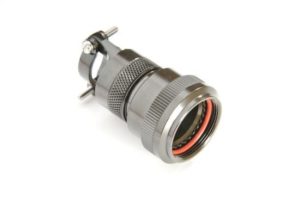Circular Connector Backshell FAQ Part 2
In this second FAQ article in our series, we look at some of the often overlooked questions arising when selecting and using Circular Connector backshells. If you need further guidance or information please do not hesitate to contact us.
What is the recommended torque for connector accessories onto connector threads?
The correct torque depends on the connector series and shell size. In general, the greater the shell size, the higher the torque required for correct assembly. The table below for Compaero accessories provides the correct torque values for the most popular connector series including MIL-DTL-38999.
What is a termination band and how do I assemble one?
A termination band is used to securely attach a cable braid or shield to a backshell. This is an essential process to ensure required conductivity in the cable assembly, typically to achieve the desired level of EMI/ RFI screening. They are available in different lengths, widths, and styles.
For Stamped Termination Bands the one step method is as follows:
Step 1: Prepare the Connector and Cable Braid
Prepare the connector and cable braid for band termination process.
Step 2: Prepare Band
Using an appropriate size band, feed the end of the band through the narrow slot on the buckle twice. This will create a double-looped band. Never use a single-looped band. To hasten the termination process on smaller adapters, pull on the end of the band to reduce the diameter of the loop.
Step 3: Insert Looped Band into Tool
Squeeze the release lever and insert the end of the band into the nose of the tool. Ensure the orientation of the band matches the graphic on the body of the tool (coil down when the tool is held upright).
Step 4: Positioning
Position the connector and the shield assembly through the band.
Step 5: Tighten Band around Braid/Connector
Repeatedly squeeze the tensioning handle until the band closes around the assembly. Once the band is close around the assembly, use half strokes of the handle until the band is tight against the braided cable. Release the tensioning handle and allow it to open fully. With one final stroke, close the tensioning handle until it locks against the tool body. This indicates that the band has been tightened to the pre-set tension.
Step 6: Cut Off
Once the tensioning handle is locked in place, squeeze the cut-off handle to finish the termination process. Both handles will open up on their own. (If shrinkable tubing is to be applied, it is recommended that the band is wrapped in tape and the excess braid folded back over the band to prevent cutting of shrinkable tubing.)
Step 7: Remove Excess Band Material
Release the tensioning handle and then squeeze the release lever. While squeezing the release lever, carefully pull on the band and slide it out of the tool and discard.
What is a shrink boot adaptor and when should I use one?
‘Shrink Boot Adaptors’ are accessories used to provide adequate surface area when unshielded cables are terminated with heat shrink boots. They attach to the tail end of a connector where the wires terminate. They should be used when a cable termination requires environmental protection and strain relief using a heat shrink boot.
NYKCS can also supply a commercial variant of Conesys D38999 III connectors that have an integral shrink boot adaptor with strap platform.
How do I choose the material and finish for my backshell?
The backshell should have the same material and finish as the connector body and is usually selected based on the required environmental performance. It is worth noting that Black Zinc Nickel is becoming the preferred option in many scenarios due to the drive to reduce the use of hazardous materials such as Cadmium.
Cable entry sizes – Could I use a larger one if available?
Backshells are available in as many as 25 different cable entry sizes ranging from 3.199 mm to 51.19 mm. Generally, it is acceptable to use a cable entry diameter 1 or 2 sizes larger than the cable provided that the clamp or shrink boot used is suitable.
What options are available for cable clamps?
The correct choice of cable clamp is critical to achieve secure termination of the cable at the connector. The main types of circular connector cable clamps are:
- 90 Degree with Clamp
- Straight with Extended Cable Clamp
- Straight with Standard Cable Clamp
- Straight for Shrink Boot
- 90 Degree for Shrink Boot
